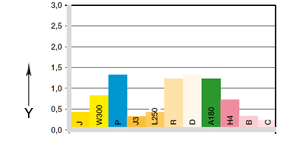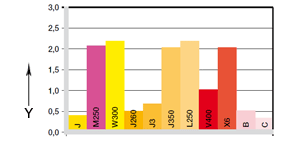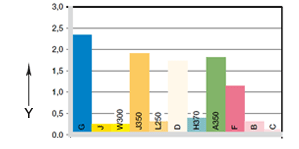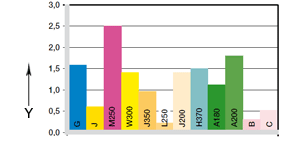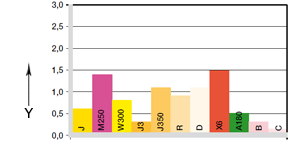iglidur® - Shaft materials

Picture 12: Pivot wear test rig for testing the pivoting wear rate for low loads
The shaft is, besides the bearing, the most important factor in a bearing system. It is in direct contact with the bearing and is, like the bearing, stressed by the relative movement. Basically the shaft also wears, but modern bearing systems are designed in such a way that the shaft wear is so low that it cannot be documented through common metrological methods. As the most important parameters, shafts can differ according to hardness and surface finish.
Coefficients of friction
The hardness of the shaft likewise plays an important role. In less hard shafts, a smoothing of the shaft occur fast in the run-in period. Abrasive levels get worn out, and the surface forms anew. For some materials this has a positive effect; the wear resistance of the polymer bearing increases.
The main shaft materials are listed, and selected iglidur® materials compared in the adjacent diagrams. For easy comprehension the scale of the wear axis is equal in all diagrams.
Especially impressive is the low wear of the systems with a hard-chromed shaft. This extremely hard, but smooth shaft acts favorably on the wear behavior with many bearing pairings. The wear of many iglidur® bearings is lower with this shaft than with every other counter partner. It should however be pointed out that due to the typically low depth of roughness, the danger of stick-slip effect on hard-chromed shafts is particularly high.
More than 100,000 products available! Delivery and consultation Mon-Fri from 7am-8pm and Sat from 8am-12pm!
